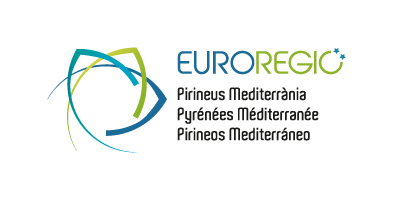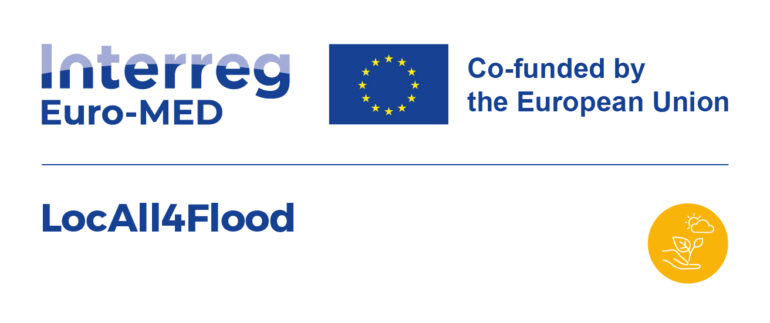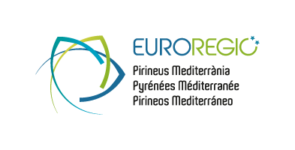LocAll4Flood

General information
LocAll4Flood presentation video
Programme: INTERREG EURO-MED
Priority: Prevention and resilience of the risks of rapid flooding in the Mediterranean basin through an integrated and multi-actor governance model combining prevention, adaptation and mitigation solutions.
Total budget: 2 343 206,89 EUR
EU funding: 1 874 565,50 EUR (80%)
Co-financing: each partner will contribute it from its own funds (co-financing rate of 80%)
Duration: 33 months, between January 2024 and September 2026
Partnership

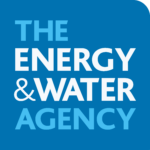
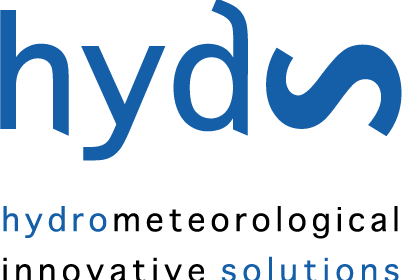
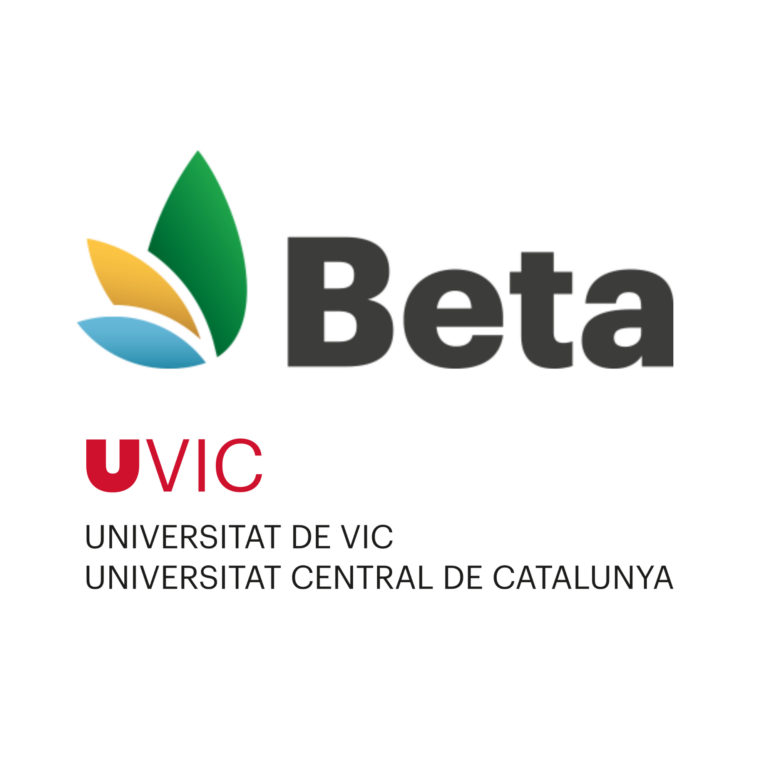
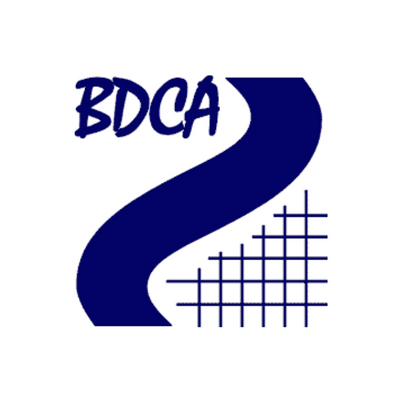

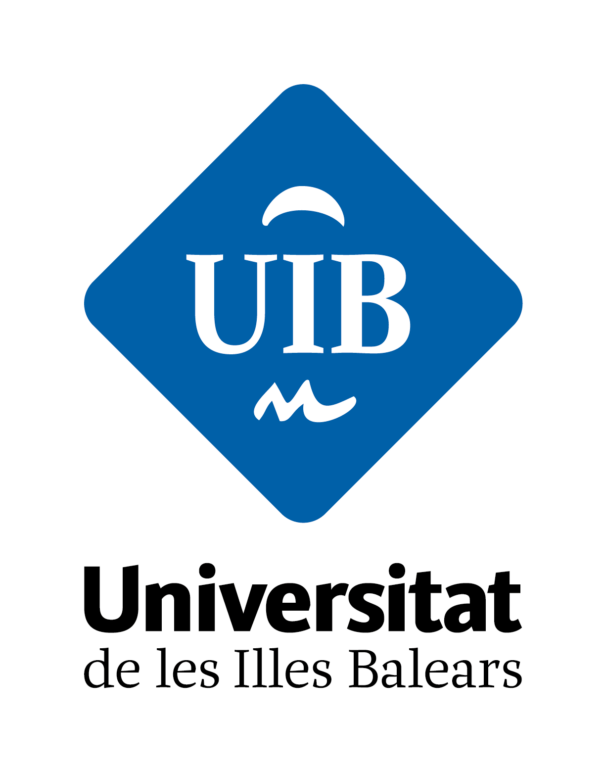
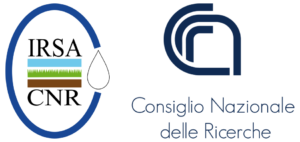
General objectives
The project aims to reduce risks associated with flash floods in small watersheds and non-perennial rivers by implementing an integrative approach combining prevention, adaptation and mitigation actions. In particular, the project will focus on 4 different topographical areas: urban areas, industrial areas, natural areas and coastal areas.
More specifically, prevention actions will focus on the development of specific hydrometeorological forecasting tools and early warning systems, while in terms of adaptation, education and awareness activities will be carried out in order to improve the response capacity of citizens and authorities to these events. Finally, in terms of mitigation, nature-based solutions (NBS) will be proposed as a tool capable of reducing the negative effects of flash floods, bringing together multidimensional benefits integrating technical, economic, governance, regulatory and social innovation.
Specific objectives
- Establish a “multi-stakeholder governance framework to deal with flash floods”. This model would combine different solutions for 4 different topographical zones (urban zones, industrial zones, natural spaces, coastal zones) and three dimensions of risk management: prevention, adaptation and mitigation.
- Improve the integrative governance framework by testing and evaluating its implementation in several small watersheds and non-perennial pilot streams in 4 different topographical areas (urban areas, industrial areas, natural spaces, coastal areas).
- Prepare the ground for the dissemination of results in other areas of the Mediterranean.
Actions
The project is divided into 3 working groups (WP).
- WP 1: DESIGN of the LOCALL4FLOOD multi-actor governance model
- WP 2: TEST the LOCALL4FLOOD multi-actor governance model
- WP 3: CAPITALIZE the LOCALL4FLOOD multi-stakeholder governance model
Who carry out the following activities:
WP1:
- Definition and description of the topographical areas most affected by flooding
- Prevention: Develop and adapt forecasting tools and early warning systems at the watershed scale in a reliable and specific manner
- Adaptation: define the components of an integrated governance model and assess social awareness and perception of risks linked to flash floods
- Mitigation: adapt, refine and categorize the inventory of nature-based solutions (NBS) to mitigate the negative effects of flash floods
- Introduction of prevention, adaptation and mitigation solutions into the integrated multi-stakeholder governance model LOCALL4FLOOD
- Validation and dissemination workshops
WP 2:
- Driver setup and description
- Prevention: Testing forecasting tools and early warning systems
- Adaptation: implement participatory actions to raise awareness in society and improve response capacity to flash floods
- Mitigation: establishing the foundations for implementing nature-based solutions through a participatory approach
- Follow-up: Evaluate the effectiveness of the LocAll4Flood model in reducing flash flood risks, also through citizen science activities.
- Ensure the commitment of different stakeholders
WP 3:
- Project coordination and management
- Communication and dissemination: online resources (web, social networks)
- Activities of the EuroMed Academy and the EUROMED Community
- Synergies and fertilization: Collaborate and share results with other EU and Mediterranean initiatives related to natural risk management
- Transfer: Multiply and capitalize on activities such as the development of recommendations for the implementation of a sustainable flood management model
- High-level conferences and promotion
- Carbon footprint assessment and compensation
Target
Local, regional and national administrations involved in planning, as well as civil society and the general population.
Role of the Euroregion
EPM will be the co-leader of WP3-Capitalization.
Contribution of 251,550.00 EUR (Interreg Fund at 80% EUR 201,240.00)
EPM will lead the following activities:
3.2 Communication and dissemination: online communication tools (web, social networks)
3.5 Transfer: multiply and capitalize on activities such as the development of recommendations for the implementation of a sustainable flood management model.
3.6 High-level conferences and promotion.
Key player in:
1.6 Validation and dissemination workshops
3.3 EuroMed Academy and community activities
3.4 Synergies and fertilization: collaborate and share your results with other Mediterranean and European initiatives linked to natural risk management
